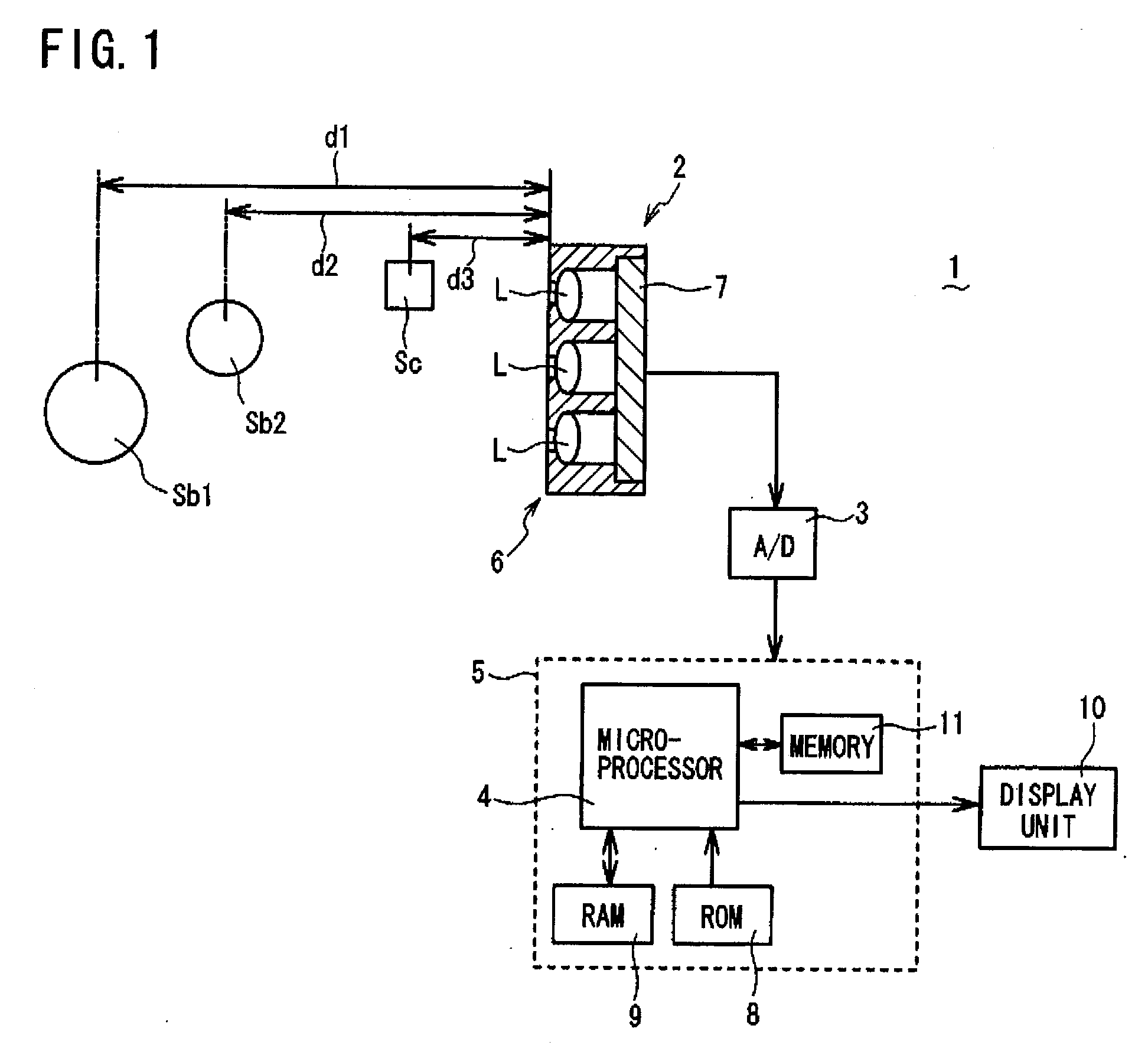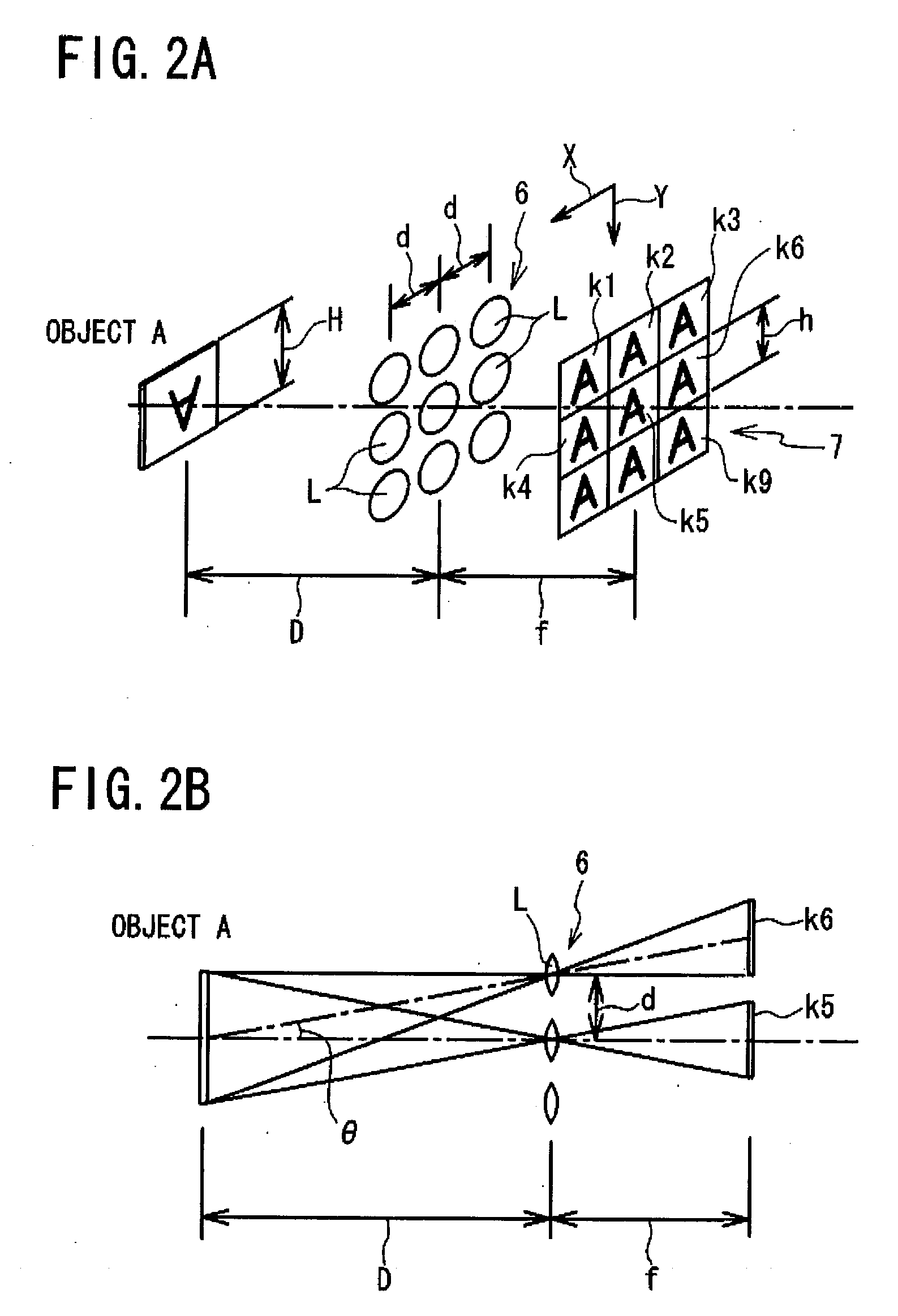Three-Dimensional Object Imaging Device
a three-dimensional object and imaging device technology, applied in the field of three-dimensional object imaging devices, can solve the problems of low definition of each captured unit image, difficulty in obtaining a reconstructed image with high definition, and difficulty in solving problems, and achieve the effect of high definition, easy to obtain, and simple process
- Summary
- Abstract
- Description
- Claims
- Application Information
AI Technical Summary
Benefits of technology
Problems solved by technology
Method used
Image
Examples
first embodiment
[0037]Referring to FIG. 1 to FIG. 14, a three-dimensional object imaging device 1 according to a first embodiment of the present invention will be described. FIG. 1 is a schematic view, partly in block form, of a three-dimensional object imaging device 1 of the present embodiment. As shown in FIG. 1, the three-dimensional object imaging device 1 comprises: a compound-eye imaging unit 2 (claimed “compound-eye imaging means”); and an image reconstructing unit 5 (claimed “image reconstructing means”) mainly composed of a microprocessor 4 for receiving, via an A / D (Analog-to-Digital) converter 3, image information captured by the compound-eye imaging unit 2, and for calculating, pixel-by-pixel, a distance (hereafter referred to as “pixel distance”) from a three-dimensional object (to be imaged) to the compound-eye imaging unit 2 (more specifically optical lens array 6 described below) based on the received and digitized image information, and further for creating a reconstructed image b...
second embodiment
[0061]Next, referring to the flow chart of FIG. 15, the process of creating a reconstructed image as performed by a microprocessor 4 in a three-dimensional object imaging device 1 according to a second embodiment of the present invention will be described. The three-dimensional object imaging device 1 of the second embodiment has the same structure as that of the first embodiment. The microprocessor 4 in the second embodiment performs steps S21 (step of obtaining unit images k1 to k9) and S22 (step of calculating a pixel distance D(x,y) for each pixel to obtain a distance image PD) which are the same as steps S1 and S2 as performed in the first embodiment, so that a detailed description thereof is omitted here, and the process from step S23 onward will be described below.
[0062]The microprocessor 4 applies the unit images k1 to k9 obtained in S21 to a known smoothing filter to extract a low-frequency component of each unit image so as to create low-frequency component unit images kl1...
PUM
 Login to View More
Login to View More Abstract
Description
Claims
Application Information
 Login to View More
Login to View More - R&D
- Intellectual Property
- Life Sciences
- Materials
- Tech Scout
- Unparalleled Data Quality
- Higher Quality Content
- 60% Fewer Hallucinations
Browse by: Latest US Patents, China's latest patents, Technical Efficacy Thesaurus, Application Domain, Technology Topic, Popular Technical Reports.
© 2025 PatSnap. All rights reserved.Legal|Privacy policy|Modern Slavery Act Transparency Statement|Sitemap|About US| Contact US: help@patsnap.com



